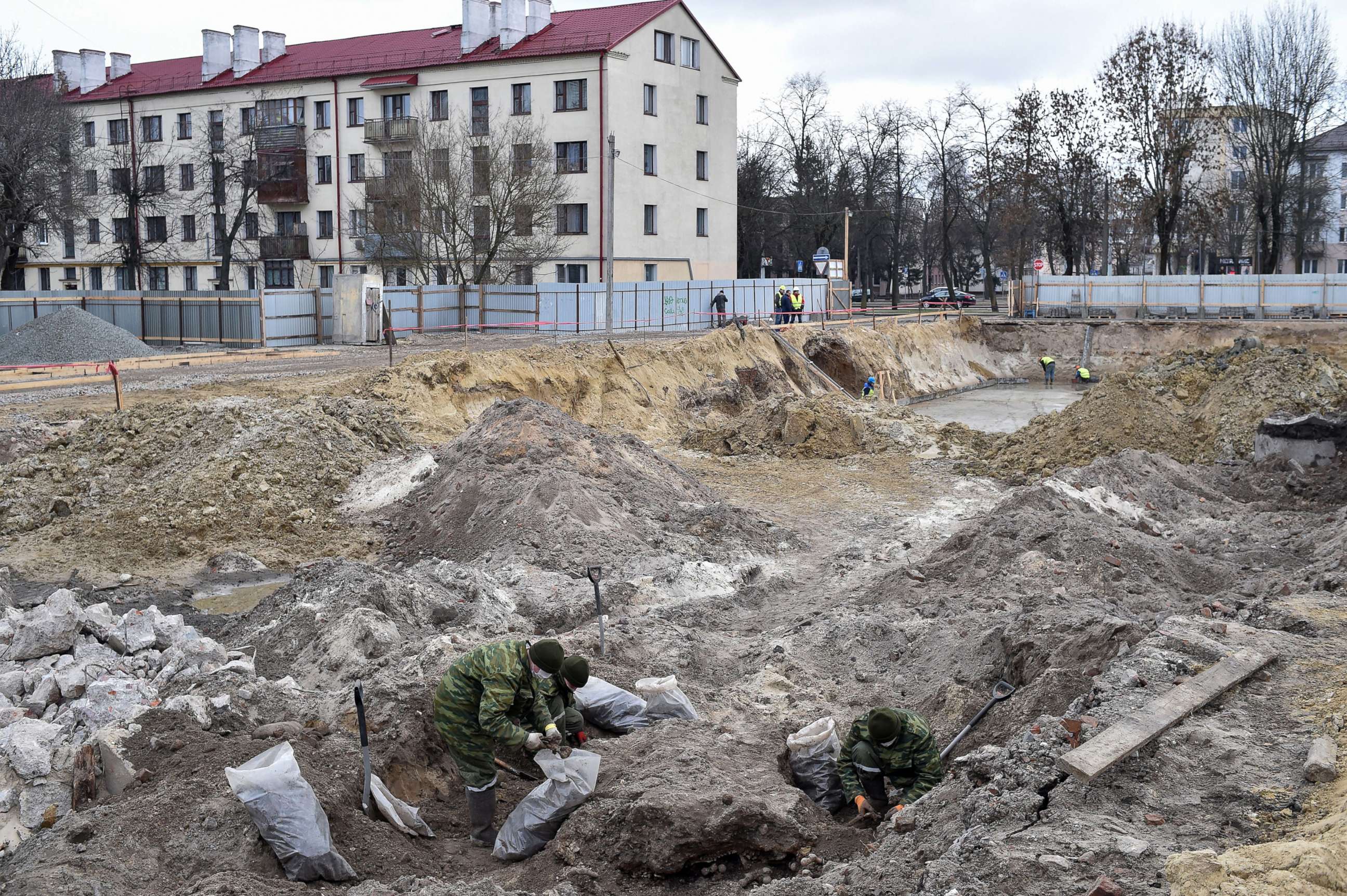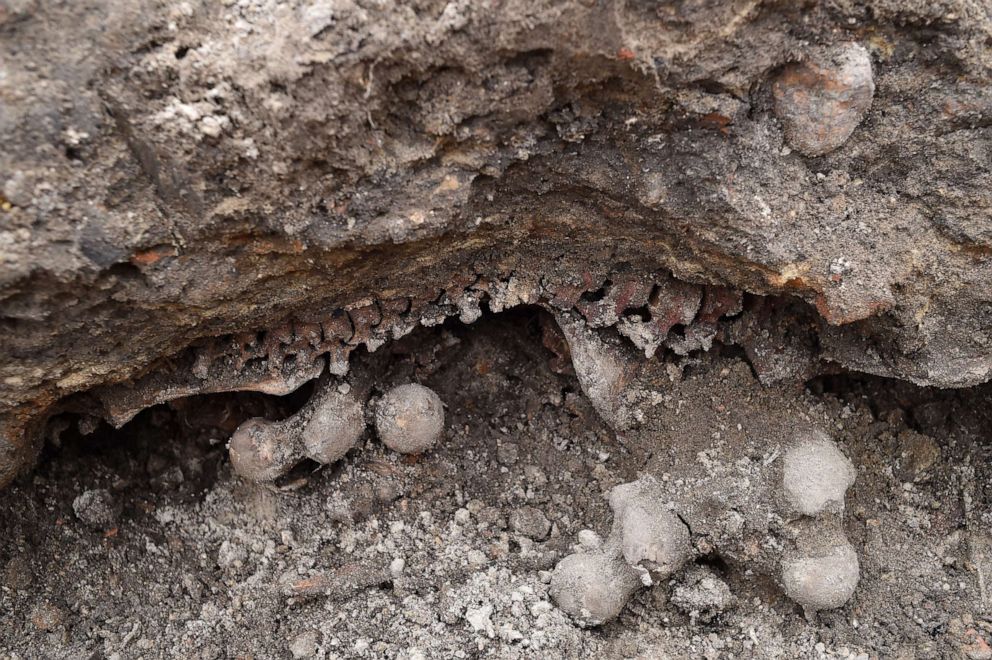More than 1,000 bodies discovered in Belarus mass grave a dark reminder of Holocaust
The discovery was made near the Polish border.
The city of Brest, on the Belarusian side of its border with Poland, has kept a terrible secret in its city's historic district for almost 80 years: a mass grave containing more than 1,000 bodies.
The prime real estate inside the old city of Brest was once a Jewish ghetto, until the early 1940s, when its 28,000 residents -- roughly half the town -- died or were one of the lucky few who fled.
It has long been known that roughly 16,000 Jews, many from Brest, were killed by Nazi soldiers in a forest northwest of the city during World War II, and that the Germans had killed many more in the ghetto.
The 1,214 bodies were uncovered in February by construction workers preparing the ground for a new luxury apartment building. Piles of bones, estimated to be up to 2 meters deep in places, were found in a 40-meter long pit. The mass slaughter may not be unknown, but the magnitude of the killing and mass burial in the heart of the city is surprising.
"There was even an article about this mass grave in the Breast local newspaper in 1999," Regina Simonenko, head of Holocaust Museum in Brest, tells ABC News. "The only surprise is a huge number of remains that was unearthed."
Belarusian Maj. Pavel Galetsky has been visiting the site and combing through one of the darkest times of the Holocaust.

"The site was horrific, I felt like weeping when I saw so many remains of women and children, a female skeleton cradling a baby," Galetsky was quoted in Belarus press. "Victims had bullets in the back of their skulls, small children’s skulls or those of the teenagers."
The Jewish community in Brest, with international support, is now requesting the grave site be made into an official Holocaust memorial.
The Simon Wiesenthal Center, in Los Angeles, sent an official letter to Belarus authorities to halt the building project.

"We firmly believe that the mass murder sites of the Holocaust should not be tampered with, and should remain the final resting places of the victims and places of commemoration, memory, and mourning," wrote Efraim Zuroff, of the Simon Wiesenthal Center.
The real estate developers and the city of Brest are offering a compromise. The building will not be built on the site, but instead next to it. The actual site will be turned into a park with a sign explaining what happened there.
City officials have promised the murder site will not be turned into a parking lot or a playground.
"The Holocaust Memorial will most likely be created there," said Alla Kondak, a city official who heads the culture department, told ABC News. Brest already has a memorial "just around the corner," where "a small marble stone is dedicated to the 34.000 Jews killed in and around Brest during WWII."

And for the new apartment building to be built next door, she says, "There should be a place where people can live well, a nice corner of the city of Brest."
Brest also has a Jewish section at the city’s cemetery and the city intends to transfer the earth from the exhumation site in May, and rebury the remains of the ghetto victims there, at the city's expense, despite Jewish religious rules against disturbing the dead.
Still, one resident born in Brest more that two decades after the war and living less than a mile from the site, told ABC News the terrible discovery provided a kind of closure.
"It is quite possible," she said, "that my maternal grandmother and my aunt and two granduncles were buried there."



